Spain's Christmas Characters
Friday, December 22, 2023
Santa Claus and the Three Wise Men have earned their well-deserved reputation, but they are not Spain's only protagonists during Christmas. Although less known, there are other very peculiar characters who always visit us around these times. From the Olentzero to the Caga Tió, the one who doesn't bring gifts still brings peace and love, something less materialistic but equally important. Discover more about these interesting Christmas characters, maybe one of them will visit your home in the coming weeks....
Basque Country: Olentzero
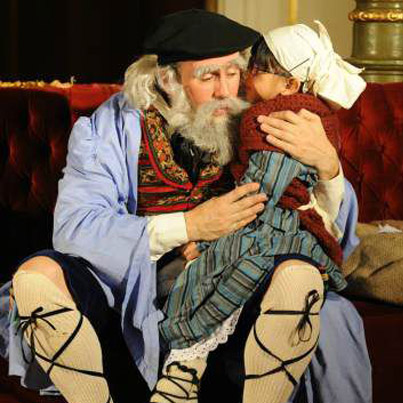 Olentzero is a coal miner who brings presents on Christmas Eve to those living in the Basque Country and Navarre. Towns, cities, and neighborhoods normally have a procession the day before Christmas with a doll that represents him. Although the origin of this tradition is unknown, some sources indicate that it comes from the winter solstices, when the doll would be set on fire to symbolize the burning of the old to make way for the new; a renewal for the following year. The tradition of fire still continues today but in the modern version the character is someone who comes down from the mountains to announce the birth of Jesus. Olentzero is a coal miner who brings presents on Christmas Eve to those living in the Basque Country and Navarre. Towns, cities, and neighborhoods normally have a procession the day before Christmas with a doll that represents him. Although the origin of this tradition is unknown, some sources indicate that it comes from the winter solstices, when the doll would be set on fire to symbolize the burning of the old to make way for the new; a renewal for the following year. The tradition of fire still continues today but in the modern version the character is someone who comes down from the mountains to announce the birth of Jesus.
Asturias: Guirria and Anguleru
.jpg) This is said to be one of the oldest traditions of the municipality of Ponga. Every New Year's Eve, the boys ride out on horseback accompanied by this half man-half demon character and they roam the streets looking for single women. The character kisses these women as it throws ashes at the boys. But it's not only the Guirria who steals kisses. Single people over 15 years old, both men and women, are paired up by pulling names from jars and they promise to have dinner together one night. Another tradition that still remains today despite the passage of time occurs on the last night of the year and that is when the Guirria and his court go door to door asking for a Christmas bonus. Asturias also has another character who is called l'Anguleru. This character comes from the Sargasso Sea and, like Santa Claus, arrives on Christmas Eve bearing gifts for the little ones. This is said to be one of the oldest traditions of the municipality of Ponga. Every New Year's Eve, the boys ride out on horseback accompanied by this half man-half demon character and they roam the streets looking for single women. The character kisses these women as it throws ashes at the boys. But it's not only the Guirria who steals kisses. Single people over 15 years old, both men and women, are paired up by pulling names from jars and they promise to have dinner together one night. Another tradition that still remains today despite the passage of time occurs on the last night of the year and that is when the Guirria and his court go door to door asking for a Christmas bonus. Asturias also has another character who is called l'Anguleru. This character comes from the Sargasso Sea and, like Santa Claus, arrives on Christmas Eve bearing gifts for the little ones.
Catalonia: Caga Tió and Caganer
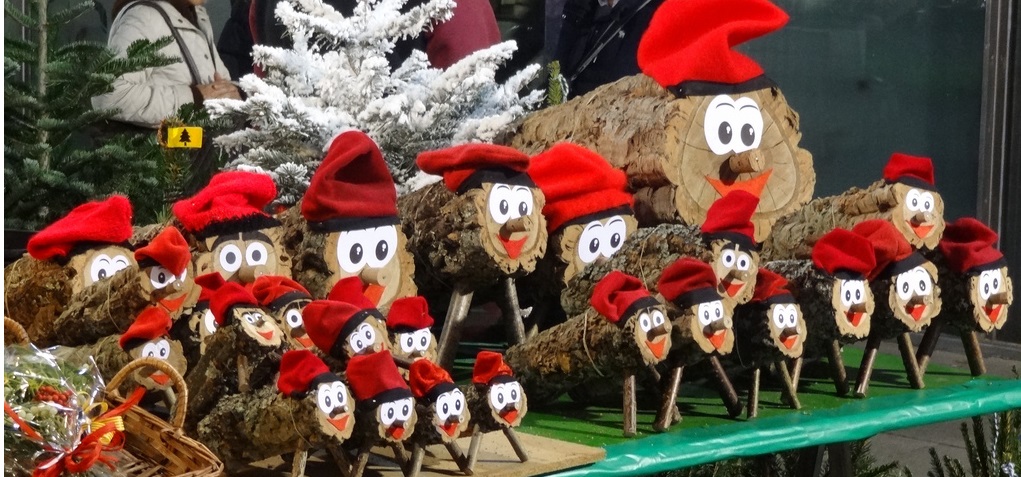
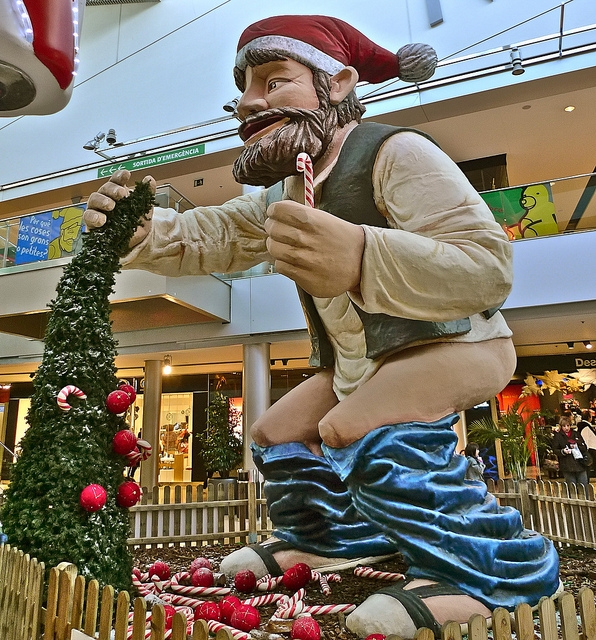 Although it may be a bit difficult for the rest of us to understand, in Catalonia children not only receive a visit from Santa Claus and the Three Kings, but also that from a log. It is not just any log, in fact, it is magical and it's called the Caga Tió. It arrives at homes on December 8th and stays until Christmas. During this time, it is always covered by a blanket and is fed daily with food scraps, fruit, and bread. On Christmas Eve, the children sing a traditional song while they hit the Caga Tió with a stick. As a result, this curious character "poops" gifts. The origin of the tradition is said to have come from the logs burned in the earthen fires at home since they provided everything the home needed: heat, light, and even a place to cook. Although the gifts were initially little things like sweets or candies, today the Caga Tió gives all kinds of presents. Although it may be a bit difficult for the rest of us to understand, in Catalonia children not only receive a visit from Santa Claus and the Three Kings, but also that from a log. It is not just any log, in fact, it is magical and it's called the Caga Tió. It arrives at homes on December 8th and stays until Christmas. During this time, it is always covered by a blanket and is fed daily with food scraps, fruit, and bread. On Christmas Eve, the children sing a traditional song while they hit the Caga Tió with a stick. As a result, this curious character "poops" gifts. The origin of the tradition is said to have come from the logs burned in the earthen fires at home since they provided everything the home needed: heat, light, and even a place to cook. Although the gifts were initially little things like sweets or candies, today the Caga Tió gives all kinds of presents.
This character, however, is not the only one with a scatological nature in the Catalan Christmas. Every year the famous Caganer, the figurine of a young herder defecating, appears in the nativity scene. In recent years caganers have been characterized as some of the year's most famous people. This is a tradition that now appears in nativity scenes throughout Spain.
Galicia: O Apalpador
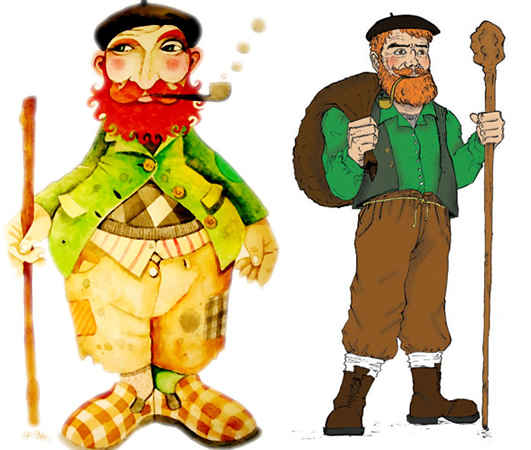 Galicia also has a curious character whose presence during the holidays has recently reappeared although its origin is very old. It is Apalpador, a first cousin of Olentzero, who has the strange habit of coming down from the mountains to pat children's bellies and see if they have eaten well during the year. The figure of this coal miner with a big belly and a red beard lives in the Galician mountains near the regions of O Cebreiro, Os Ancares, and O Courel. He comes down from here on Christmas Night and New Year's Eve. Originally, it was said that he visited homes on these special days to see if children were being well fed and if not, he would leave some chestnuts for them to eat (now he usually brings an extra present too). We can find a very similar character in Ecija, Seville. We are talking about Tientapanzas, the character who visits children at night to see if they have eaten well and then informs the Three Wise Men whether or not they deserve gifts. This tradition resumed in 2004 and since then even a parade through the village streets is held to greet him. Galicia also has a curious character whose presence during the holidays has recently reappeared although its origin is very old. It is Apalpador, a first cousin of Olentzero, who has the strange habit of coming down from the mountains to pat children's bellies and see if they have eaten well during the year. The figure of this coal miner with a big belly and a red beard lives in the Galician mountains near the regions of O Cebreiro, Os Ancares, and O Courel. He comes down from here on Christmas Night and New Year's Eve. Originally, it was said that he visited homes on these special days to see if children were being well fed and if not, he would leave some chestnuts for them to eat (now he usually brings an extra present too). We can find a very similar character in Ecija, Seville. We are talking about Tientapanzas, the character who visits children at night to see if they have eaten well and then informs the Three Wise Men whether or not they deserve gifts. This tradition resumed in 2004 and since then even a parade through the village streets is held to greet him.
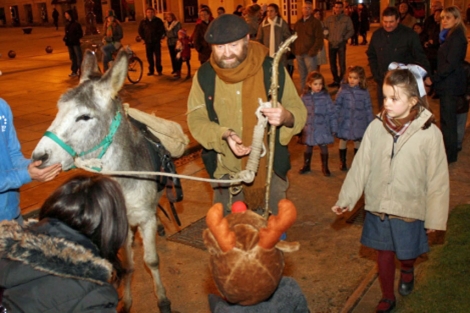
 2
Like
Published at 12:37 PM Comments (0)
2
Like
Published at 12:37 PM Comments (0)
The Origin of Churros in Spain
Saturday, December 9, 2023
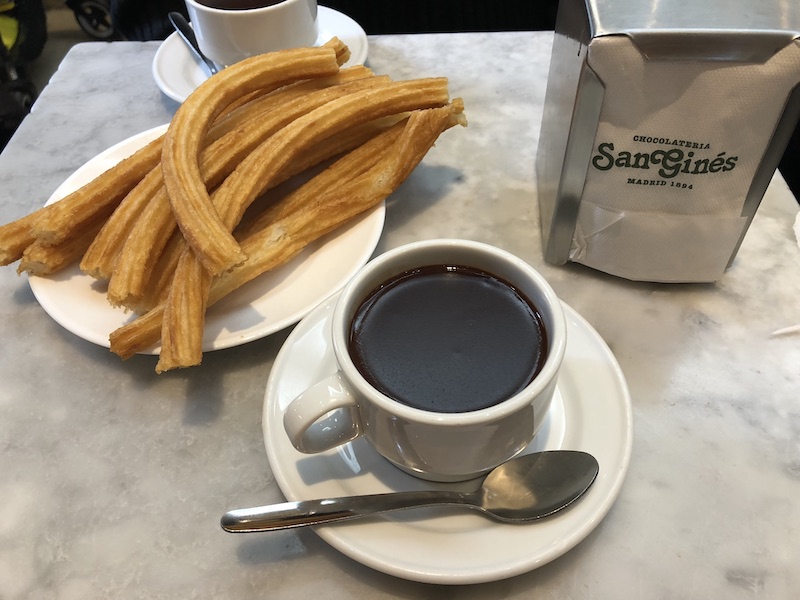
Spain has bestowed upon the culinary world a plethora of favoured dishes. Among them, the churro, a unique doughy delight enjoyed widely across Spain and the world, stands tall. Typically savoured at breakfast or as dessert, often paired with hot chocolate, churros have warmed hearts and homes and merited many queries about their genesis.
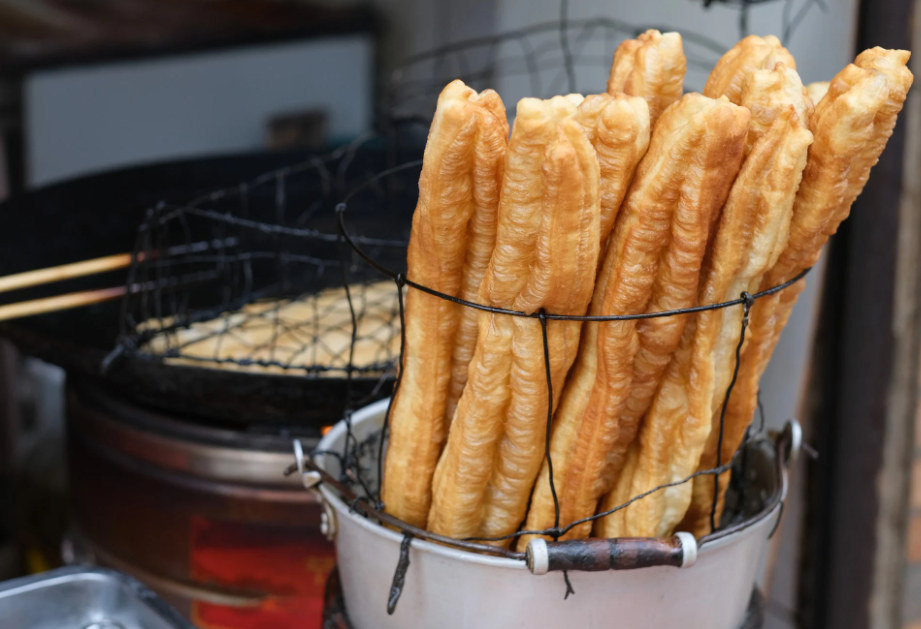 The genesis of churros is wrapped in a shroud of mystery and is subject to various theories. Some believe that churros can be traced back to Portugal and Spain's merchants who encountered 'youtiao,' a similar fried dough breakfast treat during their expedition to the East, China to be specific. Intrigued by the concept, the merchants introduced it to their homeland, adding their unique twist in shaping the recipe into the churros we know today. The genesis of churros is wrapped in a shroud of mystery and is subject to various theories. Some believe that churros can be traced back to Portugal and Spain's merchants who encountered 'youtiao,' a similar fried dough breakfast treat during their expedition to the East, China to be specific. Intrigued by the concept, the merchants introduced it to their homeland, adding their unique twist in shaping the recipe into the churros we know today.
An alternate popular theory suggests Spanish shepherds residing in mountainous terrains as the creators of churros. The lack of lush pastures and remoteness from bakeries prompted these shepherds to cook a doughnut-style food over the campfire. The carefully piped dough was easy to prepare and provided a meals-on-the-go option for the nomadic lives of the shepherds. Some conjecture even suggests that 'churro' derives its name from 'Churra,' a breed of sheep whose horns the churros were made to resemble.
Adding another layer to the theories floating around, culinary historian Michael Krondl argues that even if the Chinese fusion theory can be considered, the churro must have been a form of evolution of the 'buñelos,' a deep-fried dough ball popular within the Arab Andalusian cuisine during their rule in Spain. This variety of fried dough has been commonplace in Mediterranean culture since Roman times.
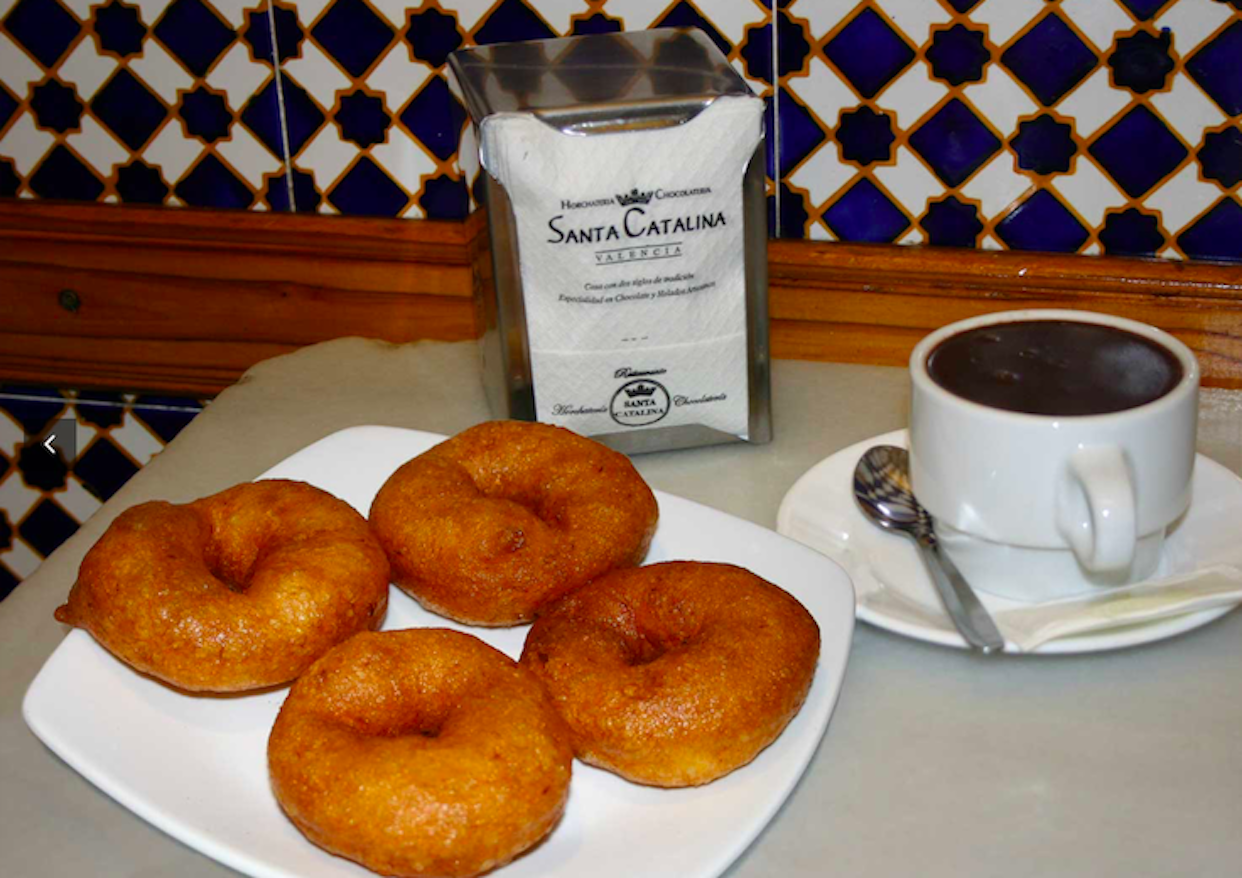
No matter where they came from, churros have solidified their place within Spanish culture for centuries, evolving into slightly sweetened, crunchy treats you could find around the clock. Churros in Spain are typically had during breakfast, dusted with sugar and served with a thick hot chocolate.
Spain's various regions have their spin on the plain churro. In Andalusia, you'll find 'calentitos,' while in Catalonia 'xurros' are thinner, often knotted. Churros made their way from Spain and were twisted to local tastes globally as they became increasingly popular. You could find churros filled with different desserts such as dulce de leche, cajeta or caramel made from goat's milk in Mexico, and fruit fillings in Cuba. Argentina offers churros filled with chocolate, vanilla, or café con leche.
The exact origin narrative of Spanish churros remains slightly blurred across history, subjected to numerous social, and cultural integrations. But their worldwide popularity is proof of their appeal and gastronomical wonder. Whether savoured on Spanish streets or at hometown fairs, their location seldom matters. The joy that the soft-on-the-inside and crunchy-on-the-outside brings is universally shared.
 3
Like
Published at 12:22 PM Comments (0)
3
Like
Published at 12:22 PM Comments (0)
Ricardo Tormo and Bultaco
Friday, December 1, 2023
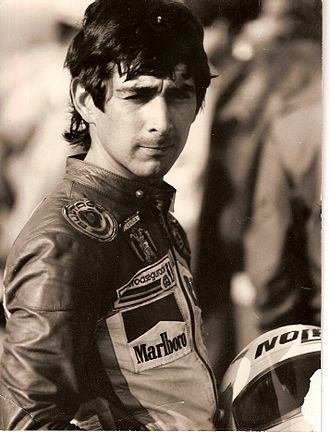 Ricardo Tormo, a true icon of motorcycling, was responsible for the resurrection of the Bultaco brand in the world of motorcycles thanks to his victories in the World Championship. Ricardo Tormo, a true icon of motorcycling, was responsible for the resurrection of the Bultaco brand in the world of motorcycles thanks to his victories in the World Championship.
Early Years of Ricardo Tormo
Born in Spain on September 7, 1952, Ricardo Tormo started his motorcycling career from an early age. His talent and skills on the track led him to compete in different categories, quickly demonstrating that he was destined to make history.
The Bultaco Brand in Trouble
The Bultaco brand, founded in 1958, was known for manufacturing high-quality, high-performance motorcycles. However, over the years, the company faced various adversities which led to its near extinction. Despite being a recognized brand, the lack of victories and positive results in the sports field tarnished its reputation.
The Encounter between Tormo and Bultaco

It was in 1976 when Ricardo Tormo met the representatives of Bultaco, who proposed he be part of their team and compete in the World Championship. Aware of Tormo's great talent, Bultaco believed that, under his leadership, they could achieve a renaissance in the world of motorcycling and regain their lost glory.
 The World Championship and the Resurrection of Bultaco The World Championship and the Resurrection of Bultaco
Ricardo Tormo agreed to join Bultaco and, with great dedication and teamwork, they managed to develop a competitive motorcycle. In 1978, Tormo competed in the 50cc category of the World Championship, where he showcased his ability to control the Bultaco in each race.
Victories started to accumulate and, in an unexpected turn of events, Ricardo Tormo and Bultaco won the World Champion title in 1978 and 1981. The duo had brought prestige and success back to Bultaco, becoming emblematic examples of overcoming adversity and resilience.
Legacy
The story of Ricardo Tormo and the resurrection of the Bultaco brand in motorcycles continues to be an inspiring example in the world of motorcycling. Today, Bultaco remains active in the market as a lifestyle brand and now as an electric bike builder, and Ricardo Tormo's name is remembered as one of the greatest riders in the history of motorcycling. A legacy that will endure in the imagination of motorcycle enthusiasts.
 0
Like
Published at 8:12 PM Comments (0)
0
Like
Published at 8:12 PM Comments (0)
Spam post or Abuse? Please let us know
|
|